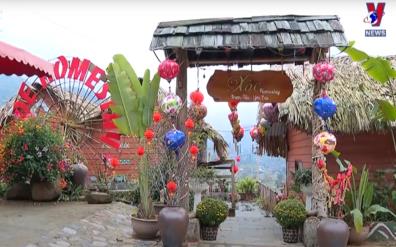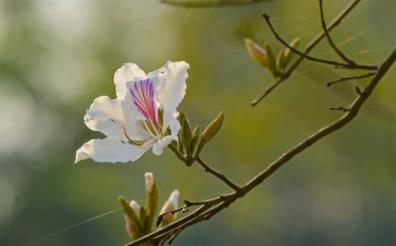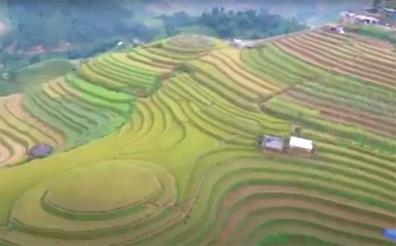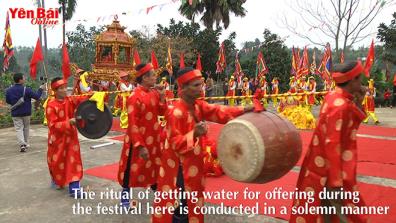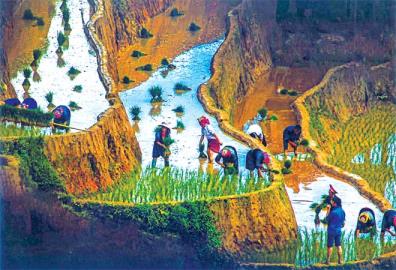A gift from nature: Yen Bai's green rice flakes
- Monday, January 20, 2020
The northern mountainous province of Yen Bai is blessed with a unique variety of rice from which locals make the iconic green rice flakes.
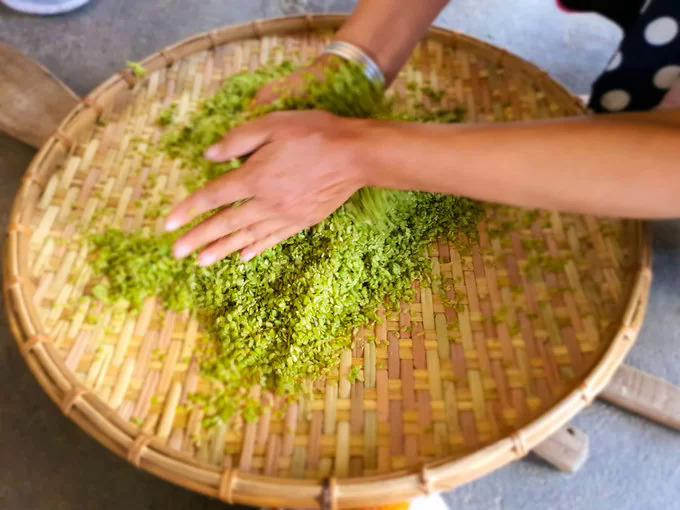
|
|
|
 |
|
In Yen Bai's Van Chan District, farmers in Tu Le Commune head to the fields at the end of September and early October to harvest their ripening rice crop, including a glutinous variety that is used to make Tu Le's famous com or green rice flakes. |
 |
|
The Thai ethnic group people in Yen Bai still make com in the traditional way by soaking rice harvested in the early morning in cold water to remove impurities. The tailings, which float to the surface, are removed. The grain used to make the green rice flakes must have a white liquid resembling milk and yellowish husk and not be fully ripe. |
 |
|
After removing the imperfect grains, the rice is roasted in a large pan over a steady fire for about 30 minutes until the seeds crack and give off an aroma. According to the Thai, this is an important stage to determine the deliciousness of the green rice flakes: too high and the fire would harden the grain, and too low and it would cause the dish to lose its stickiness. The harvested rice must be processed the same day. |
 |
|
The roasted rice is pounded in a mortar and pestle. Tu Le green rice flakes are done completely manually. Most households in Tu Le make green rice flakes, but Na Long Village is the most famous for it. On average, a family of three in Na Long Village makes about 20 kg of com daily for selling. |
 |
|
The pounding is done by two people with one wielding the pestle and the other using a large spoon to keep turning over the rice. The former has to pound with a steady, rhythmic motion, not using too much or little force, while the latter must keep the rice mixed evenly. Once the husk is cracked, the rice is scooped out of the mortar. |
 |
|
Then the ground grains are checked again to ensure there is no husk left. The pounding and screening processes are repeated to make sure the husks are removed and the grains are flattened evenly. |
 |
|
The Tu Le green rice flake has a distinctive green color and tastes best when freshly made. The final product is soft and fragrant and has a slightly bitter taste though the aftertaste is slightly sweet. People use com in various dishes like spring rolls or even desserts like ice cream. Locals also make offerings of com to ancestors. The Tu Le green rice flake has become a famous specialty now. Visitors even put it in a vacuum bag and give it as a gift. A kilogram costs about VND120,000 ($5.2) if bought from a local's house. |
Other news
In recent years, Yen Bai has emerged as a notable destination on Vietnam’s tourism map. Alongside ecological and adventure tourism, spiritual tourism has been gaining traction in the province, attracting significant interest from both domestic and international visitors. This growth not only honors spiritual values but also helps preserve the cultural and historical heritage of ethnic communities.

The 4th edition of the "Top 7 Impressive Vietnam" program, organized by Sai Gon Tiep Thi, has announced the results for the "Top 7 Most Impressive Scenic Destinations" category. Among the honored locations, Yen Bai has three sites: the Chi Pau Flower Hills on Ta Chi Nhu Peak (Tram Tau), the "Dinosaur Spine" in De Xu Phinh (Mu Cang Chai), and Thac Ba Lake (Yen Binh).

Harnessing its potential and strengths in natural landscapes, culture, and people, Tram Tau district has developed and introduced a diverse range of tourism products, including community-based tourism, resort tourism, eco-tourism, and adventure tourism, attracting numerous domestic and international visitors for sightseeing and exploration.




